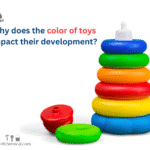The glue and paint industry plays an essential role in many industries. But this industry also faces many environmental challenges caused by the use of chemicals, manufacturing processes and packaging. The use of toxic substances, the emission of greenhouse gases and the production of hazardous waste are among the serious issues that require immediate attention and action. For this reason, identifying challenges and providing effective solutions to preserve the environment in this industry is of particular importance. These solutions can include promoting clean technologies, using environmentally friendly raw materials, improving production processes, and promoting sustainable consumption culture. This article is about examining the challenges and providing practical solutions to reduce the negative effects of the glue and paint industry on the environment.
Environmental challenges in the glue and paint industry
The glue and paint industry, as one of the large and widely used industries, plays an important role in our daily life. However, the production and use of these products can have harmful effects on the environment. We will examine the environmental challenges related to the glue and paint industry.
Air pollution: Many solvents used in the production of adhesives and paints are volatile organic compounds (VOCs), which are highly polluting. These substances can cause respiratory problems, eye and skin irritation, and also contribute to the formation of tropospheric ozone.
Water pollution: Industrial effluents from glue and paint production contain dangerous chemicals such as heavy metals, persistent organic compounds and other pollutants that can penetrate into water sources and destroy aquatic ecosystems.
Soil pollution: Improper disposal of solid waste containing chemicals used in the production of glue and paint can cause soil pollution and the penetration of pollutants into groundwater.
High energy consumption: The process of producing glue and paint consumes a lot of energy, often from fossil sources, and contributes to greenhouse gas emissions and climate change.
Waste production: The production of glue and paint is accompanied by the production of a large amount of solid waste, the improper disposal of which can harm the environment.
Solutions to reduce environmental effects
Reducing environmental impacts requires various measures and solutions. For example, using alternative solvents, developing water-based paints, improving the production process, etc. are very helpful. By implementing these solutions, it is possible to help improve the environmental performance of glue and paint industries and reduce their negative effects. Here are some important tips:
Development of clean technologies:
Use of alternative solvents: Substitution of organic solvents with aqueous solvents or bio-solvents can significantly reduce the emission of VOCs.
Development of water-based paints: Water-based paints contain less volatile organic compounds and cause less damage to the environment.
Use of raw and renewable materials: Replacing petroleum raw materials with renewable raw materials such as vegetable oils and starch can help reduce dependence on fossil resources. In other words, replacing harmful chemicals with natural and non-toxic ones. For example, using vegetable resins instead of synthetic resins.
Supporting small and medium-sized industries: Supporting small and medium-sized industries that produce environmentally friendly products can help develop this industry and reduce dependence on imported products.
Improving the production process:
Optimizing the production process: By using new technologies, the production process can be optimized and the consumption of energy and raw materials can be reduced.
Recycling and reuse of materials: recycling waste materials produced in the production process and reusing them can help reduce waste production and consumption of raw materials.
Waste management:
Proper waste separation and disposal: Separating hazardous waste from other wastes and disposing of them in safe and legal ways can prevent environmental pollution.
Development of wastewater treatment technologies: The use of advanced wastewater treatment technologies can help reduce the pollution load of industrial wastewater.
Promoting responsible consumption:
Educating consumers: Informing consumers about the environmental effects of products and encouraging them to use environmentally friendly products can help reduce the demand for harmful products.
Determining environmental standards: Developing and implementing environmental standards for glue and paint products can lead manufacturers to produce environmentally friendly products.
Development of green formulations: research and development of adhesive and paint formulations with minimal VOC (volatile organic compounds) and other harmful substances. Using blue and environmentally friendly colors.
Reducing the environmental effects of the glue and paint industry requires special measures. By implementing these solutions, we can help preserve the environment and reduce the negative human effects on nature.
Environmental laws and regulations related to the glue and paint industry in Iran and the world
Environmental laws and regulations related to the glue and paint industry in Iran and other countries have been established in order to control and reduce the negative effects of these industries on the environment. Here are some of these rules and regulations:
Environmental laws and regulations in Iran:
- Environmental Protection Law: This law, approved in 1353, aims to protect the environment and manage natural resources in Iran. Article 3 of this law prohibits air pollution and other pollution and determines the responsibilities of producers and industries.
- The executive regulation of the laws related to hazardous substances: This regulation deals with the identification, transportation, storage and removal of hazardous substances in various industries, including the glue and paint industry, and specifies the environmental requirements.
- Air Pollution Control Law: In order to reduce pollution caused by industries, including glue and paint industries, it has been established to control the emission of polluting gases and other harmful substances.
- Regulations related to waste management: These regulations deal with the way of collecting, transporting and disposing of hazardous waste of the Union, etc., and imposes responsibilities on industries regarding their waste management.
Environmental laws and regulations in the world:
- Clean Air Act: This law, which exists in the United States of America, controls air pollution caused by various industries, including chemical industries such as glue and paint, and sets standards to reduce the emission of pollutants.
- REACH Laws: These laws are enacted in the European Union for the registration, evaluation, authorization and restriction of chemicals and focus on the production and use of hazardous substances in industries.
- Toxic Substances Control Act (Toxic Substances Control Act): In the United States, this law is related to the control and evaluation of toxic and dangerous substances and affects various industries, including the glue and paint industry.
- Hazardous waste management regulations: In many countries, there are regulations for hazardous waste management, which includes waste materials produced by chemical industries.
- International treaties: such as the Stockholm Convention on Persistent Organic Pollutants (POPs) and the Basel Convention on the Control of International Movement of Hazardous Wastes, which all countries are required to comply with.
These laws and regulations at the national and international level help to reduce the environmental effects of glue and paint industries and protect the environment. Compliance with these rules will lead to maintaining the health of humans and ecosystems.
conclusion
The glue and paint industry is facing many environmental challenges. However, by adopting appropriate solutions and cooperation of industries, governments and consumers, it is possible to help reduce these effects and move towards the production and use of sustainable products. Developing clean technologies, improving the production process, proper waste management and promoting responsible consumption are among the most important solutions that can help improve the environmental situation in this industry.







22 Responses
The manufacturing of glue and paint generates a significant amount of solid waste, and if this waste is not disposed of properly, it can negatively impact the environment.
The Environmental Protection Law, approved in 1353, aims to safeguard the environment and manage natural resources in Iran. Article 3 prohibits air pollution and other forms of pollution, outlining the responsibilities of producers and industries.
The glue and paint industry is a significant and commonly used sector that impacts our daily lives. However, its production and use can harm the environment. We will explore the environmental challenges associated with this industry.
In order to reduce pollution caused by industries, including glue and paint industries, it has been established to control the emission of polluting gases and other harmful substances.
Reducing the environmental effects of the glue and paint industry requires special measures. we can help preserve the environment and reduce the negative human effects on nature.
The production of glue and paint is accompanied by the production of a large amount of solid waste, the improper disposal of which can harm the environment.
Environmental laws and regulations related to the glue and paint industry in Iran and other countries have been established in order to control and reduce the negative effects of these industries on the environment.
the identification, transportation, storage and removal of hazardous substances in various industries, including the glue and paint industry, and specifies the environmental requirements.
Industrial effluents from glue and paint production can indeed pose significant environmental risks due to the presence of hazardous chemicals.
Many glues and paints contain heavy metals like lead, cadmium, chromium, and mercury. These metals can be toxic to aquatic life and can accumulate in the food chain, potentially harming not just marine ecosystems but also human health when contaminated fish are consumed.
Chemicals such as polychlorinated biphenyls (PCBs) and dioxins are often found in paints and adhesives. POPs are resistant to environmental degradation and can persist in ecosystems for long periods, leading to bioaccumulation in wildlife. They can cause reproductive, developmental, and immunological harm to organisms.
Many paints and adhesives release VOCs during application and drying, which contribute to air pollution and health issues.
Some products contain hazardous materials like lead, chromium, and formaldehyde, which can leach into the environment, affecting water and soil quality.
The production processes often generate substantial waste, including leftover paint, packaging materials, and chemical byproducts.
High energy usage in manufacturing processes contributes to greenhouse gas emissions.
Improper disposal of paint and adhesives can contaminate water bodies, harming aquatic life.
Many traditional products rely on non-renewable resources, raising concerns about sustainability.
Great
Great
The production of glue and paint indeed involves significant energy consumption, and much of this energy comes from fossil fuels. This leads to greenhouse gas emissions, contributing to climate change and environmental degradation.
Many adhesives and paints are derived from petroleum-based products. The extraction, refining, and processing of these raw materials require substantial energy.
The processes involved in mixing, heating, and curing adhesives and paints consume a lot of energy. For instance, in paint manufacturing, processes like milling and dispersion often require considerable thermal energy.